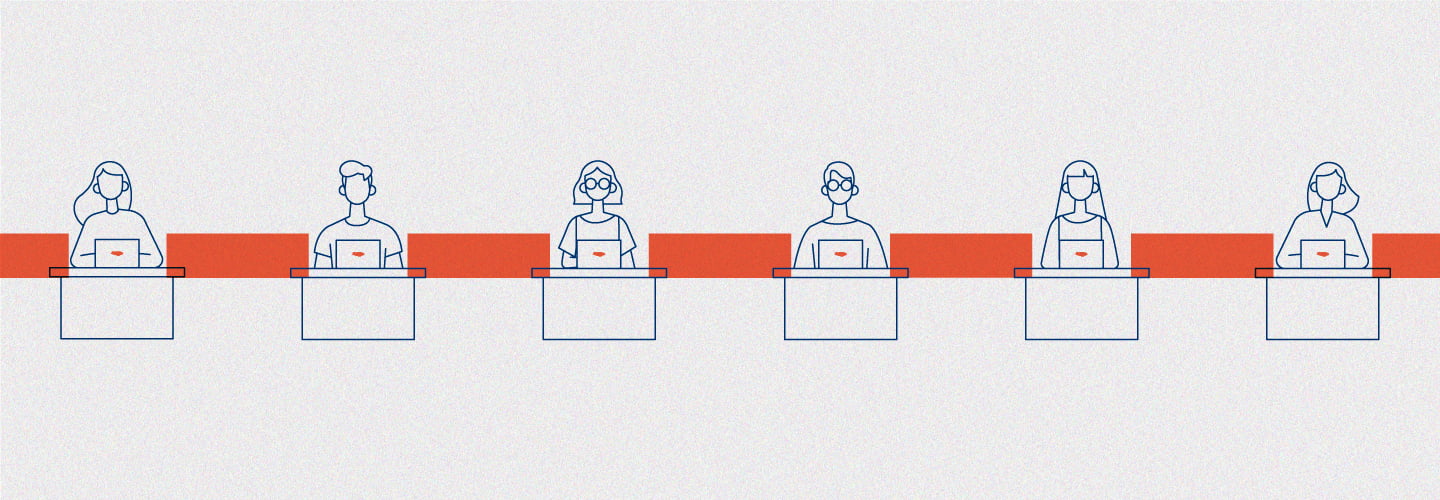France
Paris
Welcome to

The work-from-home culture, previously restricted to a minimum share of the population, has become the motto for most companies of all sizes, worldwide, and in less than a year. For us here at CBA B+G, it was no different. Among all the challenges that this moment of transformation has brought, perhaps the greatest of them is to keep alive the culture of the company and the link between its members, despite the distance and isolation. And what is, after all, company culture and how can we keep it alive?
A company’s culture is defined by a set of elements that reinforce or discourage patterns of behavior and values within the organization, reflecting the way it operates. Do you know when someone says that a place is “toxic“, or on the contrary, says that it feels like ”being with family”? Yes, this refers to culture. And it is not connected only with the well-being of employees. We are increasingly realizing that companies with strong and healthy cultures impact productivity and business results. For Livia Brandini, founder & CEO of Kultua, a startup that recently conducted the culture diagnosis of CBA B+G, understanding the culture installed in the company is the first step to successfully drive any change in the organization. She says:
“Strengthening organizational culture and engagement at work increases business results by more than 20%, encouraging more positive relationships and work experiences for employees. There is no doubt, cultural barriers have proved to be the main obstacles to the transformation process necessary for the prosperity and health of organizations.”
From home, at a monthly meeting created to talk about ESG issues (come learn more about Café+ here!), the agenda was exactly this: and now, what will be the future of work, outside the office? Among the good reflections that emerged, we gathered key elements that we identified as part of a company’s culture, along with ideas on how to deal with them within a remote working context.
People: companies are made of them. Without them, nothing exists. The quality of the relationship between people who coexist within a community says a lot about the values of that place, creating a sense of belonging to something greater. In face-to-face work, it is easier to keep in touch with people inside and outside their respective areas, or to know what is going on by inviting a workmate over for a coffee. In a work-from-home regime, people from different areas can work in the same company and never even see or know each other.
In order not to lose the connection between people and distinct areas, it has become even more important to create group dynamics that involve different areas on a regular basis and to have communication channels that facilitate spontaneous exchange between people – to talk about work or any other subject. We all like to meet colleagues also to relax and talk about trivial things. This lightness makes the work more pleasant.
Rituals: These are all the habits that have a special meaning in the routine, bringing a breather and creating a common identity. In the case of CBA B+G, we can mention the birthday celebrations with everyone in the agency singing “Happy Birthday” and eating a piece of cake, the collective meditation every Thursday at noon, or even the Pet Day (day when pets were welcome to spend all day in the office with us).
And how can we recreate these significant moments in a digital context? Here, our suggestion is to adapt: find new ways that suit the online environment, rather than romanticizing it and wanting it to become a copy of the face-to-face reality – it is not. From this understanding, there are numerous possibilities to recreate rituals in a hybrid way, half physical and half digital, such as keeping happy hours and breakfasts at a distance – with real beer, coffee, and Brazilian cheese bread.
Institution: Companies are places of work, which implies seriousness, rules. Cultivating a certain ‘discipline’ is also a necessary and welcome attitude, as it suggests guidelines that keep the focus on results and productivity. What’s more, it shows employees that they are not left to their own devices and that the leaders are committed to guiding and empowering them.
Currently, the first of the golden rules is to communicate, communicate, communicate. The second is to trace growth paths for everyone in the company, building a career plan, providing feedback and focusing on self-development. It is true that Human Resources and internal communication have never been so fundamental.
Environment: The physical space is also part of the culture, it is the embodiment of the company’s vision, conveying its values to the world. In many companies, the lobby is a place where one proudly displays the manifesto, beliefs, or any other symbol that represents their mission. The environment has the ability to put all employees in the same tune, typical of the company.
And what is the size of the challenge we face nowadays that each one is immersed in their personal bubble? Some virtual dating platforms, such as Topia and Gather are seeking to solve this issue, with the promise of recreating customized offices that mimic the physical space and bring the spontaneity of unplanned meetings.
We are beginning to enter a new era and one thing is clear: for many (most?) companies, nothing will be as before. With advantages and disadvantages, the remote and hybrid working models have come to stay. Businesses of all sizes have the unique opportunity to rethink processes and give new importance to the culture of the company and its employees. After all, there’s give and take on both sides, every day.